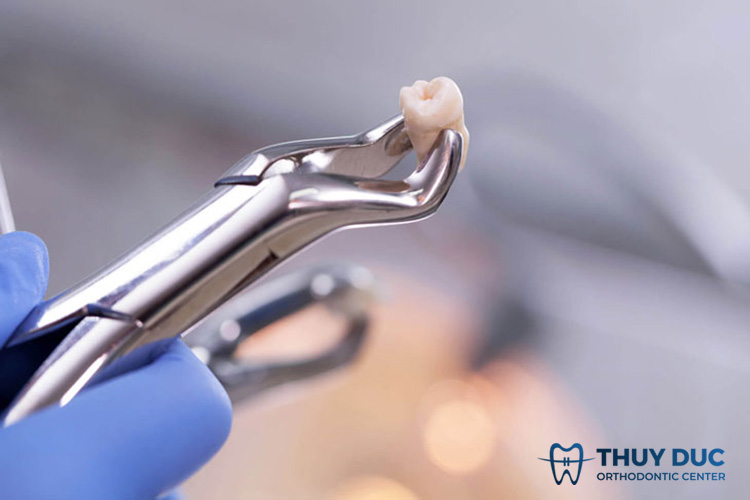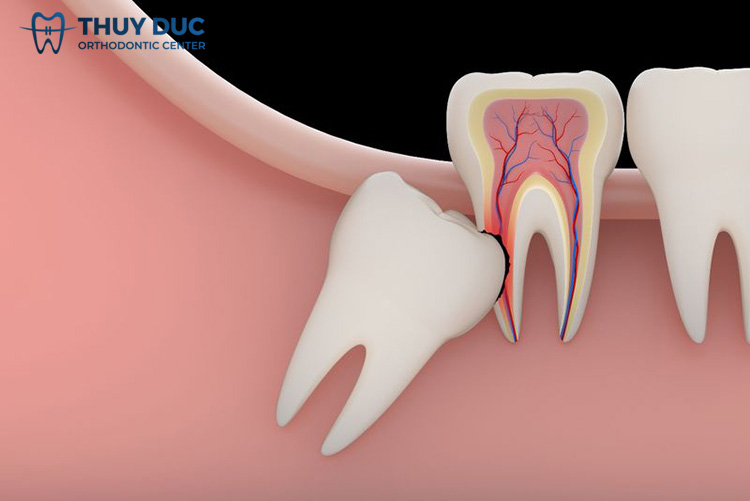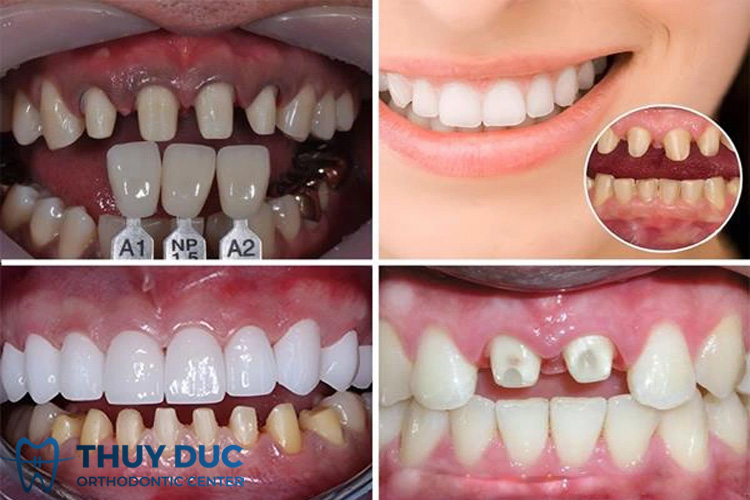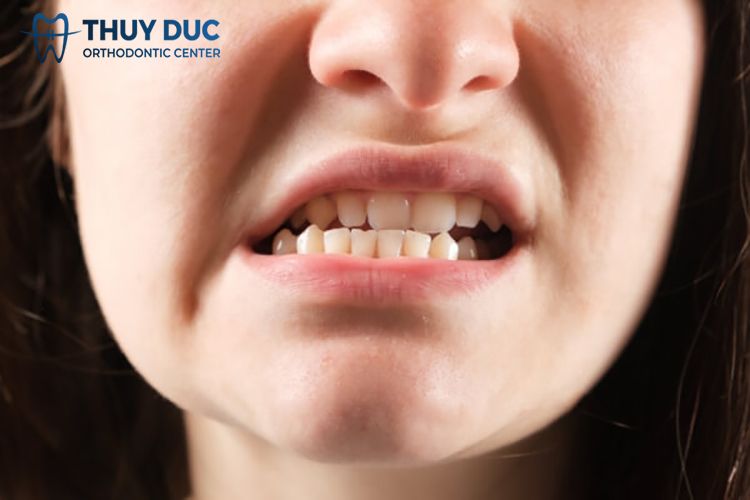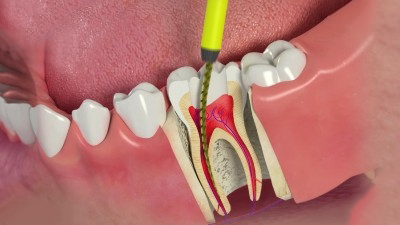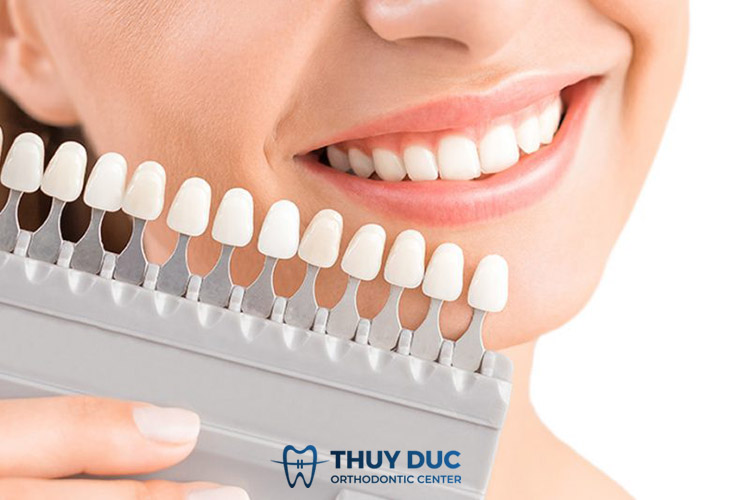Porcelain crowns are a solution to help bring bright, white teeth and correct many teeth defects. However, like other cosmetic methods, porcelain crowns can cause many problems for the teeth, the most common being exposed porcelain teeth. What are the signs of exposed porcelain teeth? How to prepare? Let’s find answers to the above questions in this article.
Table of contents
- 1. What are the signs of exposed porcelain teeth?
- 2. Causes of porcelain teeth having exposed roots
- 2.1. Porcelain teeth are exposed due to the doctor’s inexperience
- 2.2. Porcelain teeth are exposed due to the wrong size of the porcelain teeth
- 2.3. Whether porcelain teeth are exposed or not depends largely on the quality of the porcelain teeth
- 2.4. Porcelain teeth are exposed due to poor glue quality
- 2.5. Unscientific oral hygiene leads to exposed porcelain teeth
- 3. Harmful effects of porcelain crowns with exposed roots
- 4. How to fix leaking porcelain crowns
1. What are the signs of exposed porcelain teeth?
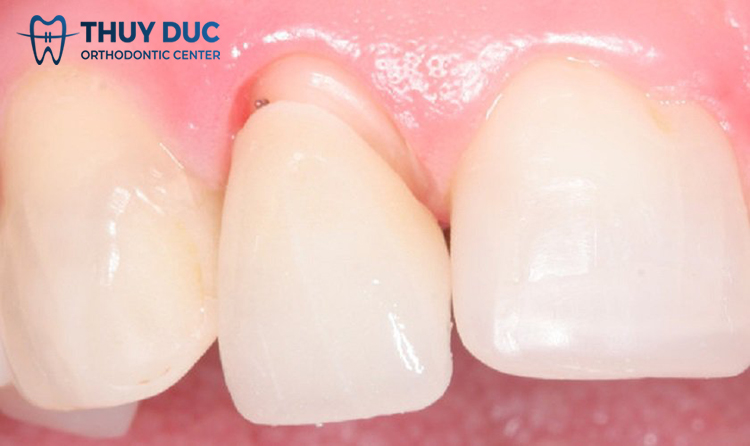
If there is a gap between the porcelain tooth and the real tooth, especially at the line adjacent to the gums, it may be a sign that the porcelain tooth is leaking.
Exposed porcelain teeth can increase pain or sensitivity when exposed to hot, cold, sweet foods…
If there is a gap between the porcelain tooth and the gum, an area of black or red gum may appear.
When porcelain teeth are exposed, it can cause difficulty in chewing.
If there is a gap, food can be trapped or stuck between the porcelain tooth and the real tooth.
Early recognition of signs of exposed porcelain teeth will help you promptly remedy this situation
Early recognition of signs of exposed porcelain teeth will help you promptly remedy this situation
2. Causes of porcelain teeth having exposed roots
Some causes of broken porcelain teeth:
2.1. Porcelain teeth are exposed due to the doctor’s inexperience
Porcelain dental crowns are a complex process, requiring high precision and technique from the dentist. If this process is performed incorrectly, it can lead to many problems, including the risk of exposed roots. If the dentist grinds away too much of the natural tooth to make the porcelain tooth fit properly, this can lead to a reduced chance of the porcelain tooth firmly attaching and increase the risk of exposed roots. Besides, if the dentist does not accurately assess the condition of the gums and tooth structure and does not plan the treatment properly, it can lead to the porcelain teeth not being placed in the correct position.
2.2. Porcelain teeth are exposed due to the wrong size of the porcelain teeth
The process of taking jaw impressions is an important step in the process of making porcelain teeth and plays a decisive role in achieving the best results. If the process of taking jaw impressions is not done properly or using poor quality tools, it will lead to errors in making porcelain teeth, especially the wrong size. Specifically:
If the doctor does not perform the jaw impression technique correctly, the result will be a jaw impression that is not in the correct position and shape of real teeth.
Jaw impression tools need to ensure quality to be accurate and detailed. If the tools are not of high quality, important details will be lost, leading to porcelain teeth being crafted to the wrong size.
Dentists need to pay attention to small details of tooth structure such as shape, size and neighboring teeth. If any detail is missed, it can lead to inaccurate porcelain tooth fabrication.
2.3. Whether porcelain teeth are exposed or not depends largely on the quality of the porcelain teeth
Poor porcelain material or poor manufacturing techniques can cause irritation and swelling of the gums, while also increasing the risk of tooth infection. Besides, poor quality porcelain teeth can increase the risk of structural failure and damage to real teeth.
2.4. Porcelain teeth are exposed due to poor glue quality
Porcelain glue plays an important role in the process of covering porcelain teeth and greatly affects the strength of porcelain teeth. When quality glue is not used or used incorrectly, many serious problems can occur:
Glue is used to bond porcelain teeth to real teeth. If the glue is of poor quality or insufficient, it will lead to exposed porcelain roots, increasing the risk of plaque and bacteria.
Insufficient quality glue increases the risk of porcelain teeth cracking, especially when porcelain teeth are subjected to daily chewing pressure.
If the glue does not ensure strong adhesion, it can lead to the porcelain tooth falling out of its position. This not only affects aesthetics but is also annoying and requires multiple dental interventions.
When there are signs of exposed porcelain roots, it will create favorable conditions for bacteria and mold to grow, causing gum health problems and bad breath.
2.5. Unscientific oral hygiene leads to exposed porcelain teeth
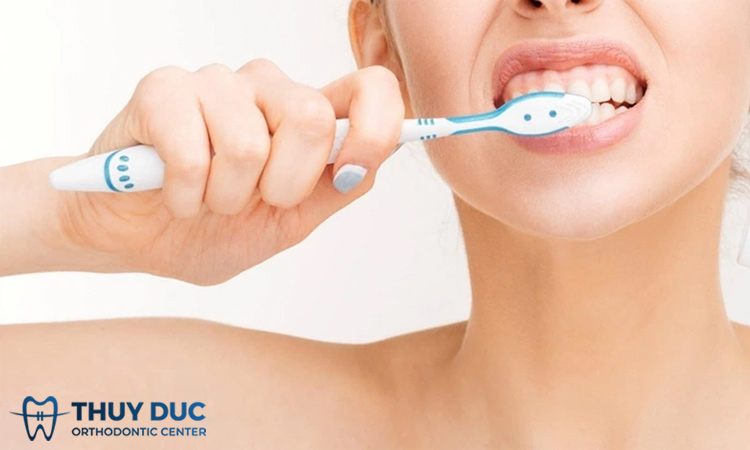
Mistakes in oral care after porcelain crowns can cause porcelain teeth to become exposed, such as:
Brushing too hard: If you brush too hard, especially with a hard toothbrush, it will wear down porcelain and real teeth. This can lead to exposed roots and reduced adhesion of porcelain teeth.
Improper brushing technique: Brushing technique is also important. If you brush your teeth in the wrong direction or do not pay attention to the areas around the porcelain teeth, it can create conditions for plaque and bacteria to grow, increasing the risk of exposed roots.
Do not use dental floss: Dental floss helps clean areas that are difficult to reach with a toothbrush, helping to reduce the risk of exposed roots.
Improper eating and brushing habits after eating: Eating habits can affect the porcelain tooth surface and increase the risk of exposed roots.
Poor quality porcelain teeth can lead to porcelain teeth falling out or causing damage to real teeth..
3. Harmful effects of porcelain crowns with exposed roots
Cracked porcelain teeth can cause negative effects on oral function and health. Below are some harmful effects of exposed porcelain teeth:
Risk of infection and dental disease: When porcelain teeth are exposed, the gaps between teeth become places where plaque and bacteria can easily accumulate. This increases the risk of diseases such as tooth decay, gingivitis and tartar.
Sore and sensitive teeth: Exposed porcelain teeth can increase pain when eating, especially when food is inserted through the teeth. Tooth sensitivity to hot, cold or sweet foods is also a common problem.
Difficulty in chewing: Cracked porcelain teeth cause difficulty in chewing food and lead to imbalance in the bite.
Bad breath: Plaque and bacteria accumulating between porcelain teeth can increase the risk of bad breath. If not treated promptly, this condition can become serious and affect confidence in communication.
Aesthetic effects: Porcelain teeth that are exposed and black at the roots can reduce the aesthetics of the smile, affecting confidence and psychology.
4. How to fix leaking porcelain crowns
Most importantly, you need to visit your dentist regularly to check and maintain the health of your porcelain teeth. If there are any signs of exposed porcelain roots, the dentist will make appropriate treatment decisions.
In case of serious exposed porcelain tooth roots, you need to remove the old porcelain tooth and replace it with a new porcelain tooth. If the exposed porcelain root is due to an error during the coating process, the dentist can adjust the size or junction of the porcelain tooth.
In some cases, using new porcelain veneers can help improve exposed roots.
Your dentist can guide you through changes in your daily oral care routine that will protect your porcelain teeth from exposed roots.
It can be seen that when properly covering porcelain teeth and maintaining scientific oral hygiene, there will be no signs of exposed porcelain teeth. Dental care and porcelain teeth require care and thoroughness to ensure the best aesthetics and dental health.
